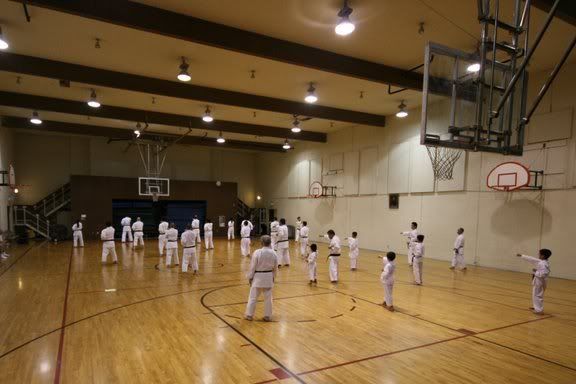Kaishugata & Timing
A little while ago we talked about what Heishugata is all about. I know it was just an basic overview, to which you'll learn more and more as you advance with your own sensei as well as figure things out on your own by drilling, asking questions, drilling some more to develop your muscle memory and your breathing. However, Kaishugata is another thing. Goju Ryu Black Belts, especially those who are training for your Japan Karatedo Federation (JKF) rank must also work on the required Kaishugata depending on their rank.
JKF Requirements Besides Sanchin and Tensho
- Shodan = Saifa
- Nidan = Seiunchin
- Sandan = Sanseiru
- Yondan = Shisochin
- Godan = Seipai
- Rokudan = Seisan
- Nanadan = Kururunfa
- Hachidan = Suparimpei
Now just so that I don't upset the traditionalists or the modernists, I'd like to put out there that I used to practice competitive kata however, now I focus mainly on Shinsa (testing) kata, which is more traditional as JKF Goju Kai is trying hard to bring it back to the roots by allowing the top Goju minds, including Jundokan, to study and deciminate the information back down to its branch organizations.
Seiwa Kai USA has some good seminars they hold in the USA by inviting certain Goju senseis who really focus on the mechanics as well as take time to break down how they are currently teaching kata in Japan. Said guests to include, Saito Sensei, who is a top competitor in the Japanese National Karate scene as well as Seiwa Kai head, Fujiwara Sensei, who are both phenomenal in how they bring the topic of Kaishugata to the table. I, myself, have been lucky enough to translate for Fujiwara Sensei and other great senseis who have visited through our sister Goju Kaiha, Seiwa Kai.
Eibu kan, under Hamabata Sensei has had the honor of learning from our Shihan, Hisanaga Yoshihiro, and let me tell you he has been an eye opener when we have the opportunity to have him visit our dojo. Our dojo training becomes a one or two week seminar to go over all Goju Ryu Kaishugata and sometimes we feel that we can't soak up the information enough. While it is difficult for many of the beginners to keep pace, our Black Belts assimilate the information as much as we can and then compare notes after each of Hisanaga Sensei's visits. Shihan's teaching always include kihon mastery. Without it kata is a disaster.
Each Goju Kaishugata has meaning and purpose. I believe that if we don't understand the spirit behind each kata, we will not understand the depth of each kata fully. Unlike Heishugata which focuses on tension, Kaishugata focuses on timing of the tension depending on the techniques executed. Transition of movement or transition from stance to stance is very important... your embusen... must not be too shallow or must not be too deep depending on the angle of attack or angle of defense. 45, 90, 180 etc degree turns require accurate timing and "kime" however that "kime" can only be determined by the application of said tension at particular points during technique execution within the kata. This is what makes Kaishugata different from Heishugata, where Heishugata continually maintains said tension mainly throughout the kata without completely losing it, and where Kaishugata you focus on tension at particular points.
My thought is this when practicing particular Kaishugatas.
My thought is this when practicing particular Kaishugatas.
- Learn what the objective of the kata is. What does the name of the kata mean?
- How can I apply my techniques to meet that objective? Does the execution of my technique give the kata justice?
- How can I make the kata mine? Do I understand the bunkai of the kata?
Just some thoughts that go through my head when I work out any of the 10 Kaishugata in Goju Ryu. BTW... breaking down bunkai is great! What's even greater is when you sit down and learn bunkai from some of the current top minds in Goju as they show you how they interpret our katas. I suggest if you can sign up for some of the upcoming seminars through Seiwa Kai USA or California Goju Ryu Association, I would do so just so that I can experience the mastery they bring to our art.







